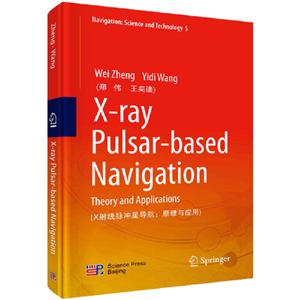-
>
宇宙、量子和人类心灵
-
>
气候文明史
-
>
南极100天
-
>
考研数学专题练1200题
-
>
希格斯:“上帝粒子”的发明与发现
-
>
神农架叠层石:10多亿年前远古海洋微生物建造的大堡礁
-
>
声音简史
X射线脉冲星导航:原理与应用:theory and applications 版权信息
- ISBN:9787030647719
- 条形码:9787030647719 ; 978-7-03-064771-9
- 装帧:圆脊精装
- 册数:暂无
- 重量:暂无
- 所属分类:>>
X射线脉冲星导航:原理与应用:theory and applications 内容简介
This book discusses autonomous spacecraft navigation based on X-ray pulsars, analyzing how to process X-ray pulsar signals, how to simulate them, and how to estimate the pulse's time of arrival based on epoch folding. In turn, the book presents a range of X-ray pulsar-based spacecraft positioning/time-keeping/attitude determination methods. It also describes the error transmission mechanism of the X-ray pulsar-based navigation system and its corresponding compensation methods. Further, the book introduces readers to navigation based on multiple measurement information fusion, such as X-ray pulsar/traditional celestial body integrated navigation and X- ray pulsar/INS integrated navigation. As such, it offers readers extensive information on both the theory and applications of X-ray pulsar-based navigation, and reflects the latest developments in China and abroad.
X射线脉冲星导航:原理与应用:theory and applications 目录
- >
大红狗在马戏团-大红狗克里弗-助人
大红狗在马戏团-大红狗克里弗-助人
¥5.2¥10.0 - >
名家带你读鲁迅:故事新编
名家带你读鲁迅:故事新编
¥13.0¥26.0 - >
【精装绘本】画给孩子的中国神话
【精装绘本】画给孩子的中国神话
¥18.6¥55.0 - >
龙榆生:词曲概论/大家小书
龙榆生:词曲概论/大家小书
¥8.7¥24.0 - >
罗庸西南联大授课录
罗庸西南联大授课录
¥14.1¥32.0 - >
姑妈的宝刀
姑妈的宝刀
¥15.7¥30.0 - >
朝闻道
朝闻道
¥14.8¥23.8 - >
月亮虎
月亮虎
¥15.4¥48.0
-
世纪幽灵-走近量子纠缠
¥9.4¥28 -
物理学之美-插图珍藏版
¥29¥69 -
半导体物理学(第8版)
¥46.4¥59.8 -
冬吴相对论-附光盘
¥18.6¥49 -
空间域密度界面反演方法
¥38.4¥68 -
不良情绪应急处理包--孤独感
¥12.9¥30
医学统计学 第4版
¥118.2¥139.0虚实融合视频地理环境关键技术研究
¥25.1¥36.0自动控制理论(本科教材)
¥29.1¥39.0现代控制理论 Modern Control Theory
¥21.9¥29.0木质基金字塔型点阵夹芯结构与性能优化研究
¥32.9¥58.0

















